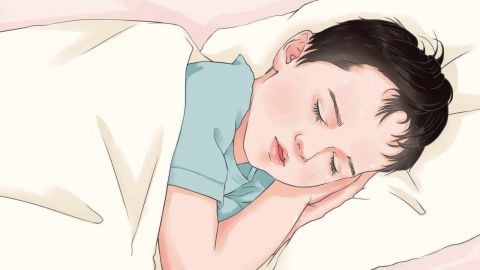What to do if a 3-year-old child has a fever
Fever, or pyrexia, in a 3-year-old child may be caused by excessive clothing, increased metabolic rate after eating, common cold, acute pharyngitis, bacterial bronchitis, etc. It can usually be managed by adjusting clothing, physical cooling methods, or medication. If any abnormalities occur, prompt medical attention is recommended. Detailed explanations are as follows:

1. Excessive clothing: When parents dress the child too warmly, heat dissipation is hindered, causing a temporary increase in body temperature. Clothing should be reduced immediately, indoor ventilation maintained, and the neck and groin areas wiped with warm water to assist heat dissipation, allowing the body temperature to gradually return to normal.
2. Increased metabolism after eating: After eating, the child's digestive system becomes active, increasing body heat production, which may cause transient low-grade fever. No special treatment is required; allow the child to rest quietly and drink an appropriate amount of warm water, with body temperature usually returning to normal within half an hour.
3. Common cold: A viral infection causes the common cold. The virus stimulates the immune system, triggering inflammation and elevated body temperature, often accompanied by symptoms such as nasal congestion, clear nasal discharge, and mild coughing. Doctors may recommend medications such as pediatric paracetamol and amantadine granules, pediatric cold relief syrup, or ribavirin granules to alleviate symptoms and inhibit the virus.
4. Acute pharyngitis: Bacterial or viral infection of the pharyngeal mucosa leads to inflammation, which causes fever along with symptoms such as sore throat, refusal to eat, and red, swollen throat. Doctors generally recommend medications such as cefixime granules, Pudi Lan Xiao Yan oral liquid, and Kehou Jian spray to control the infection and relieve throat discomfort.
5. Bacterial bronchitis: Bacterial infection of the bronchi causes inflammation, leading to persistent high fever accompanied by coughing and yellow sputum production. Treatment should be carried out under a doctor's guidance using medications such as amoxicillin and clavulanate potassium dry suspension, azithromycin granules, or pediatric expectorant and cough-relieving granules to fight the infection and promote sputum clearance.
In daily life, monitor the child's temperature every half to one hour, and avoid wrapping the child tightly when fever occurs. Diet should consist mainly of light, liquid foods, ensuring adequate water intake. If the fever persists for more than three days, the temperature exceeds 39℃ and cannot be controlled, or if symptoms such as poor mental state, convulsions, or breathing difficulties occur, seek immediate medical attention.






